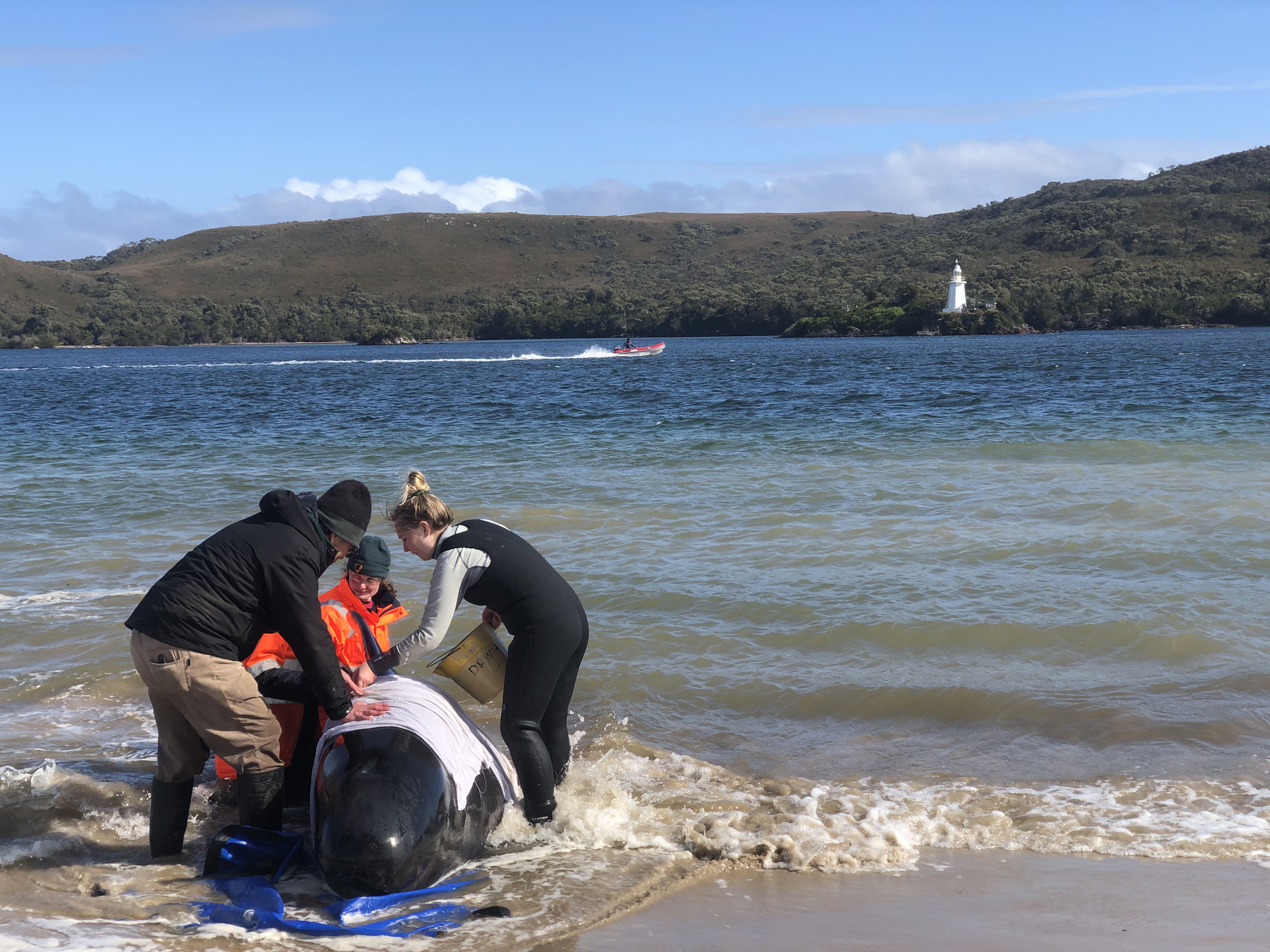Mass stranding event beaches 450 whales in Tasmania
Rescue efforts are underway to pull the surviving whales back into deeper water.

More than 450 pilot whales have become stranded off of Tasmania's west coast, in what is the worst whale stranding event the Australian island has ever seen.
Earlier this week, 270 pilot whales were found stranded on sandbars and along the beach at Strahan, a coastal town in Tasmania around Macquarie Harbor. But while rescue efforts were underway on the ground to pull the living whales back into deeper water, recent aerial surveys revealed another gruesome scene not far away.
Surveyors found an additional 200 whales that were stranded about 4.3 to 6.2 miles (7 to 10 kilometers) farther south in the dark waters of the Macquarie Harbour, bringing the count of stranded whales up to around 470 whales, according to a statement released today (Sept. 23) by the Tasmanian government's Department of Primary Industries, Parks, Water and Environment.
Related: Photos: pilot whales in trouble off Everglades
"From the air most of the additional whales detected appear to be dead, but a boat has headed over there this morning to do an assessment from the water," Incident Controller and Parks and Wildlife Service (PWS) regional manager Nic Deka said in the statement. Dozens of rescuers, including a local fisher, have used equipment such as slings to pull the living whales back into deeper water, according to the BBC.
The rescuers have so far managed to save 50 of the whales and are working to save another 30 that are stranded but still living. But strong tides have made rescue efforts difficult, as some of the rescued whales were brought back to shore, according to the BBC. "Our focus is on those animals that are still alive," Deka said. "The mortality has increased, but there are a significant number that are alive so we will continue to work with those."

The additional whales discovered in Macquarie Harbor by aerial surveys are thought to be part of the same stranding event, according to the statement.
Sign up for the Live Science daily newsletter now
Get the world’s most fascinating discoveries delivered straight to your inbox.
Before this mass stranding, the largest stranding event in Tasmania occurred in 1935 and involved 294 long-finned pilot whales in Stanley, a town on the northwest coast of the island state. It might even be the largest Australia has ever had, Karen Stockin, an associate professor at Massey University in New Zealand told The Guardian.
"It's fair to say this will probably rank third or fourth globally," she said. The largest documented stranding in the world occurred in 1918, when around 1,000 whales beached themselves at the Chatham Islands, about 500 miles (800 km) east of New Zealand, according to New Zealand's Department of Conservation.
Scientists don't know exactly why massive groups of whales end up stranded together, Live Science previously reported. One hypothesis is that the pilot whales' echolocation, or the use of soundwaves to locate objects, doesn't work as well in shallow waters next to sloping coastlines, according to the New Zealand Department of Conservation.
The whales could have failed to detect the shoreline when, say, they followed fish — their food — to shore. What's more, pilot whales are highly sociable creatures, living in tight communities. It's possible that one of the whales could have misled the whole faithful group to shore, according to the BBC and the Department of Conservation.
Originally published on Live Science.

Yasemin is a staff writer at Live Science, covering health, neuroscience and biology. Her work has appeared in Scientific American, Science and the San Jose Mercury News. She has a bachelor's degree in biomedical engineering from the University of Connecticut and a graduate certificate in science communication from the University of California, Santa Cruz.









